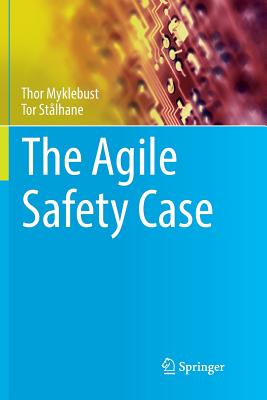Embedded Software Development for Safety-Critical Systems
暫譯: 安全關鍵系統的嵌入式軟體開發
Hobbs, Chris
- 出版商: Auerbach Publication
- 出版日期: 2020-09-30
- 售價: $2,390
- 貴賓價: 9.5 折 $2,271
- 語言: 英文
- 裝訂: Quality Paper - also called trade paper
- ISBN: 0367658747
- ISBN-13: 9780367658748
-
相關分類:
嵌入式系統
-
其他版本:
Embedded Software Development for Safety-Critical Systems (Hardcover)
Embedded Software Development for Safety-Critical Systems, 2/e (Paperback)
商品描述
"I highly recommend Mr. Hobbs' book." - Stephen Thomas, PE, Founder and Editor of FunctionalSafetyEngineer.com
Safety-critical devices, whether medical, automotive, or industrial, are increasingly dependent on the correct operation of sophisticated software. Many standards have appeared in the last decade on how such systems should be designed and built. Developers, who previously only had to know how to program devices for their industry, must now understand remarkably esoteric development practices and be prepared to justify their work to external auditors.
Embedded Software Development for Safety-Critical Systems discusses the development of safety-critical systems under the following standards: IEC 61508; ISO 26262; EN 50128; and IEC 62304. It details the advantages and disadvantages of many architectural and design practices recommended in the standards, ranging from replication and diversification, through anomaly detection to the so-called "safety bag" systems.
Reviewing the use of open-source components in safety-critical systems, this book has evolved from a course text used by QNX Software Systems for a training module on building embedded software for safety-critical devices, including medical devices, railway systems, industrial systems, and driver assistance devices in cars.
Although the book describes open-source tools for the most part, it also provides enough information for you to seek out commercial vendors if that's the route you decide to pursue. All of the techniques described in this book may be further explored through hundreds of learned articles. In order to provide you with a way in, the author supplies references he has found helpful as a working software developer. Most of these references are available to download for free.
商品描述(中文翻譯)
「我非常推薦霍布斯先生的書。」- 史蒂芬·托馬斯(Stephen Thomas),PE,FunctionalSafetyEngineer.com 的創辦人及編輯
安全關鍵設備,無論是醫療、汽車還是工業,越來越依賴於複雜軟體的正確運作。在過去十年中,出現了許多標準,規範這些系統應如何設計和建造。開發人員過去只需了解如何為其行業編程設備,現在必須理解相當深奧的開發實踐,並準備向外部審核員解釋他們的工作。
《安全關鍵系統的嵌入式軟體開發》討論了根據以下標準開發安全關鍵系統的過程:IEC 61508;ISO 26262;EN 50128;和 IEC 62304。它詳細說明了標準中推薦的許多架構和設計實踐的優缺點,涵蓋了從複製和多樣化到異常檢測以及所謂的「安全袋」系統。
本書回顧了在安全關鍵系統中使用開源組件的情況,並從 QNX Software Systems 用於安全關鍵設備(包括醫療設備、鐵路系統、工業系統和汽車駕駛輔助設備)嵌入式軟體建設的培訓模組課程文本演變而來。
雖然本書主要描述開源工具,但也提供了足夠的信息,讓您在選擇商業供應商時能夠進行探索。如果您決定追求這條路徑,本書中描述的所有技術都可以通過數百篇學術文章進一步探討。為了提供您進入的途徑,作者提供了他作為一名工作軟體開發人員認為有幫助的參考資料。這些參考資料大多可以免費下載。
作者簡介
Chris is a programmer at QNX Software Systems with some 40 years of software development experience. His specialty is "Sufficiently Dependable Software," which is software that meets its dependability requirements with the minimum development effort and risk. In particular, he works with software for safety-critical systems that must meet the requirements of international safety standards such as IEC61508, ISO26262, EN50128 and IEC62304. Outside his professional work as a software developer, Chris is the author of several books including "Flying Beyond: The Canadian Commercial Pilot Textbook" and "Embedded Software Development for Safety-Critical Systems."
作者簡介(中文翻譯)
Chris 是 QNX Software Systems 的程式設計師,擁有約 40 年的軟體開發經驗。他的專長是「足夠可靠的軟體」(Sufficiently Dependable Software),這種軟體能以最小的開發努力和風險滿足其可靠性要求。特別是,他專注於安全關鍵系統的軟體,這些系統必須符合國際安全標準的要求,如 IEC61508、ISO26262、EN50128 和 IEC62304。在專業的軟體開發工作之外,Chris 還是幾本書的作者,包括《Flying Beyond: The Canadian Commercial Pilot Textbook》和《Embedded Software Development for Safety-Critical Systems》。










